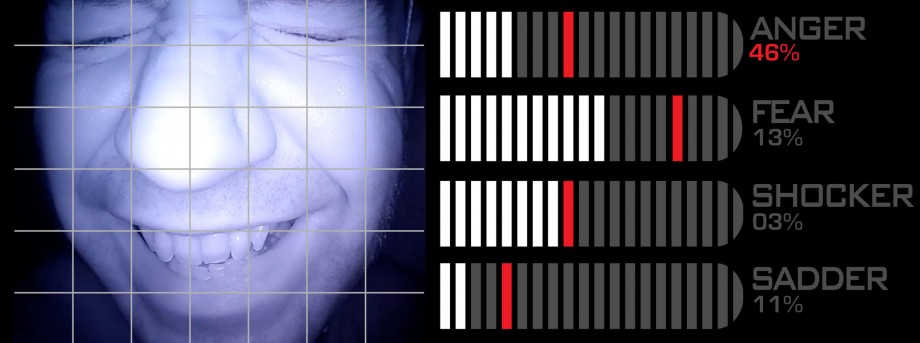The University of Nottingham
 Exchange online
Exchange online
Research Exchange
The Smiler showcases university Thrill Laboratory’s secret weapon

A new secret weapon in thrill-seeking designed by a University of Nottingham research team has been tested out on the world’s loopiest rollercoaster which opens at Alton Towers later this week.
The Smiler is a new and unique type of white knuckle ride which will be terrifying Alton Towers visitors with its record-breaking 14 loops and world-first optical and sensory illusions including water-spray, blinding lights and ‘virtual’ jabbing needles.
University scientists have been testing out their new facial expression recognition system on the lucky TV reporters who are among the first people to sample the thrills of the ride. The technology was featured in BBC’s Blue Peter last week when presenters Barney Harwood and Helen Skelton were among the first few people to try The Smiler.
Using the expression recognition software, rollercoaster designers can now pinpoint exactly what the rider is feeling as they experience the ride. In the Blue Peter experiment, Helen was the biggest thrill-seeker with the happiest reactions and Barney showed the most fear and anxiety according to the data analysed after their rides. An ultimate goal is to embed software like this into rides which will then respond to facial signals for an individually tailored ‘scream if you want to go faster’, white-knuckle experience.
Expressions of emotion
The facial expression recognition system was developed by Dr Michel Valstar’s Automatic Human Behaviour Understanding team in the University’s School of Computer Science. PhD student Timur Almaev created a new technique using Local Gabor Binary Patterns in Three Orthogonal Planes (LGBP-TOP), which can sense the movements of facial features in local space-time video volumes. The system is being used as part of the ‘Vicarious’ project at the University’s Horizon Digital Economy Research Institute and the University’s Mixed Reality Laboratory where computer scientists, sociologists, psychologists, engineers, architects and artists collaborate to create new interactive technologies.
Dr Valstar said: “What the system does, is reduce the very rich natural image of your face to only show the edges in it: the lines of your lips, eyes, and eyebrows, as well as wrinkles and furrows that appear when you smile for example. But what makes our system special is that we look at the movements of these edges in small space-time video volumes; small parts of the face followed for a few frames at a time. The computer then learns how to interpret these facial actions as expressions of emotions.”
Adaptive thrill rides
Professor Brendan Walker, TV presenter, Thrill Engineer, and Senior Research Fellow at the University, added: “What we are working towards is the development of a non invasive system that can be used on TV which offers the real time detection of human emotions via analysis of facial expressions caught on camera. We can output the graphics as HD ready for TV producers and editors to incorporate into their show. The ultimate development of ‘adaptive’ thrill rides is another goal we are working towards but our aim at Alton Towers on The Smiler was to create a system that could be embedded into TV production of factual entertainment formats and we think it worked really well.”
For more information visit www.the-smiler.com
Leave a Reply
Other

Top prize for quantum physicist
A University of Nottingham physicist has won a prestigious medal from the Institute of Physics for […]

Zero carbon HOUSE designed and built by students comes home
Design and construct a low cost, zero carbon, family starter home, transport it to Spain, build […]